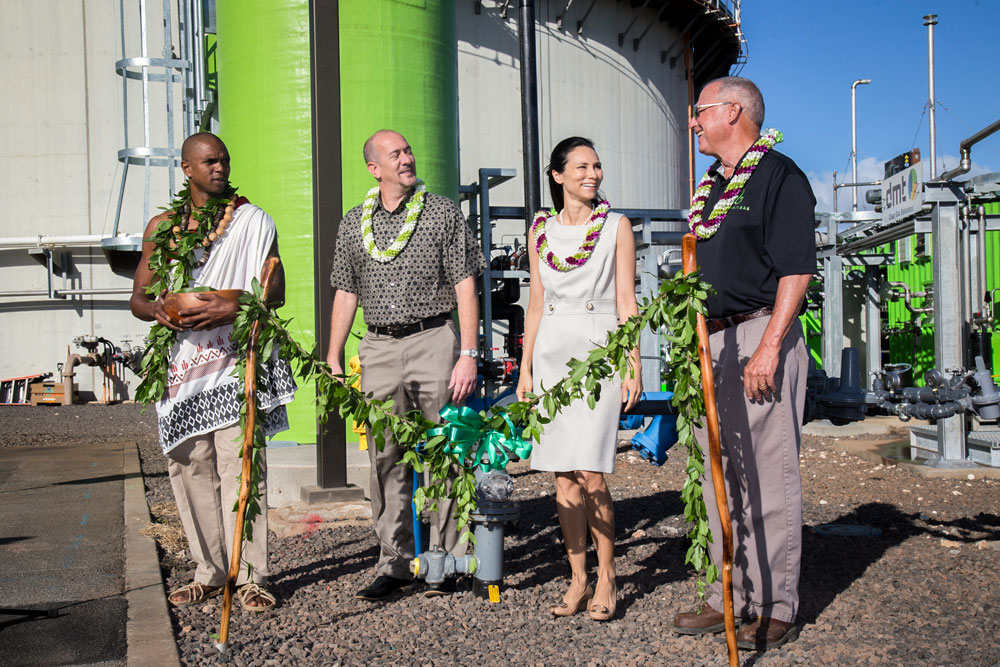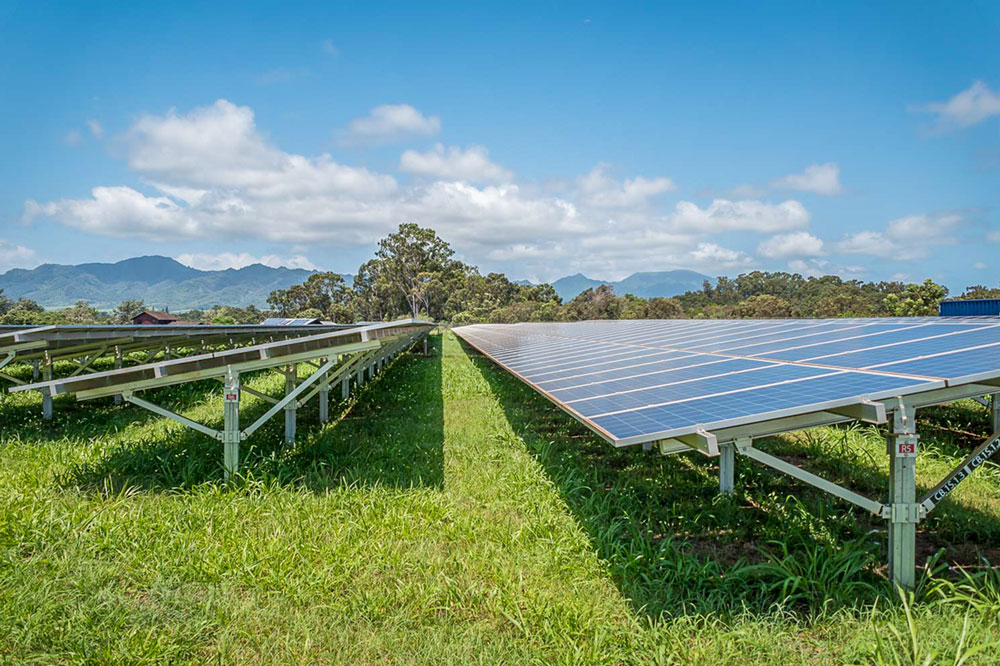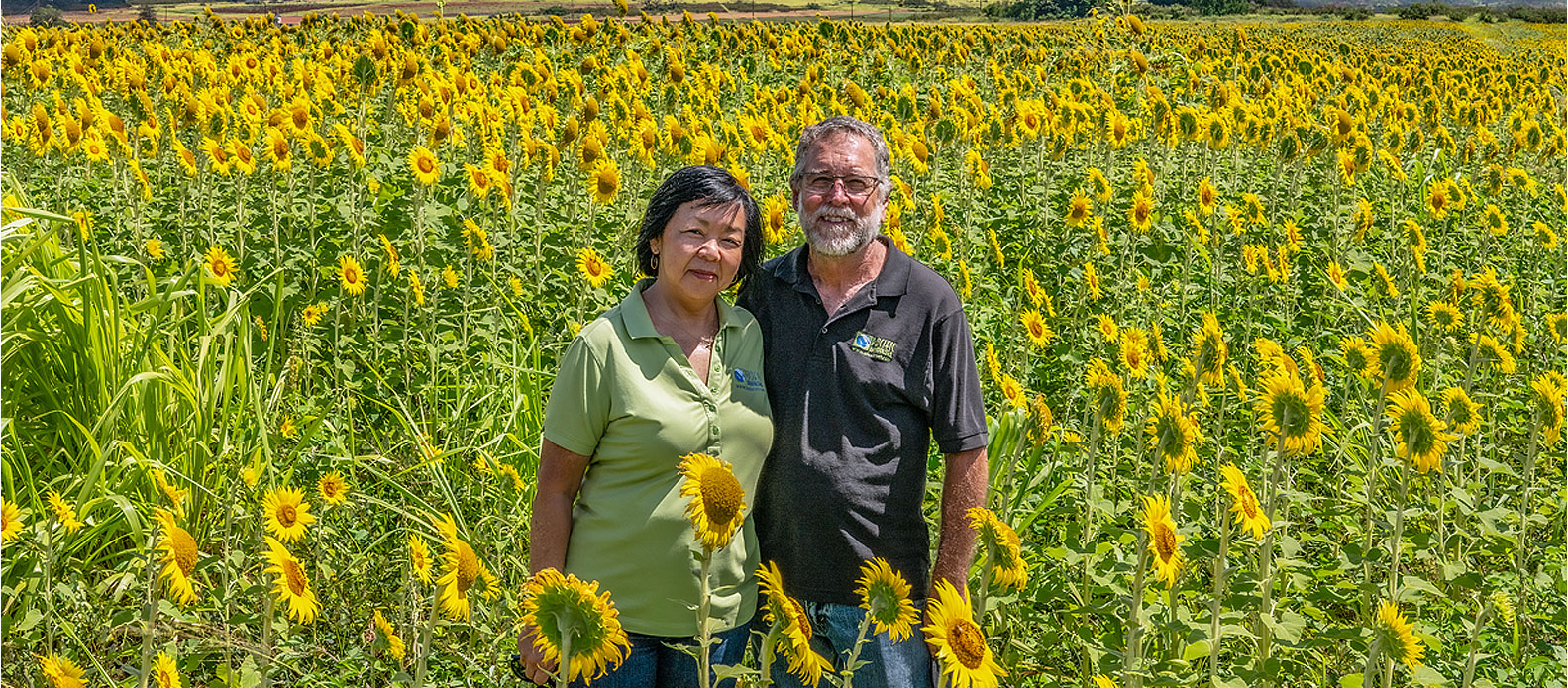How Hawai‘i Gas is leading the way with renewable initiatives
Few issues are more critical for our planet than the need to increase our usage of renewable, resilient and environmentally sustainable sources of energy. That is especially true here in Hawai‘i, a place that is not only exceptionally vulnerable to climate change but also more dependent on imported oil than any other state. Our vulnerability to climate-related changes, such as sea-level rise, ocean temperature increases and shoreline erosion, are matched only by our vulnerability to natural disasters.
Hawai‘i is leading in the development of sustainable energy technologies for the future, with options in solar, wind and geothermal. However, during natural disasters common to the islands, including hurricanes, tsunamis or even high winds, without the ability to transmit electricity through power lines, these sources might not be there for us when we need them most. That’s why Hawai‘i Gas is focused on developing another renewable energy source: renewable natural gas, a waste-derived energy.
The state’s emergency-management officials tell us to be prepared for 14 days without power in the event of a disaster, but the reality is that a Category 3 or stronger hurricane could knock out electricity for months. Living in the islands, we know that even normal weather patterns can affect electricity-generating renewables. As an island state, reliability is critical for normalcy and survival.
As recently as 2005, Hawai‘i experienced 40 days and 40 nights of rain. We should learn from the experiences of others, including Puerto Rico, where recovery efforts are still underway long after its recent natural disaster. A diversified portfolio of renewable energy sources is key, and renewable natural gas is now part of that portfolio.
Hawai‘i Gas has a vision that supports the state’s clean-energy goals while providing both resiliency and sustainability for our communities. A holistic view of energy is critical for the state, and Hawai‘i Gas has multiple initiatives that focus on diverse energy sources, including renewable natural gas produced from biowaste, as well as projects related to hydrogen, and a 6.5-megawatt solar farm. These initiatives are just the latest developments in the company’s long history of energy innovation in the islands, which goes back over 100 years.
Renewable Natural Gas
Renewable Natural Gas (RNG) is intended for commercial and residential use, and it is delivered safely and reliably through Hawai‘i Gas’ underground utility pipeline. This means that when winds are high and the power goes out, gas users can still cook and access hot water for sanitation. This is a critical piece of Hawai‘i’s resiliency plan for surviving natural disasters. Hawaiʻi Gas has over 1,100 miles of underground piping and has not experienced a major disruption in gas supply since the bombing of Pearl Harbor in 1941. The comfort of being able to cook and bathe after a catastrophic event cannot be overstated.
Hawai‘i Gas began exploring RNG in 2011, when it launched a pilot project to study the potential for capturing biogas from animal fats. RNG is produced by harvesting and processing the gases that are released when organic materials decay. Raw materials like energy crops, landfill waste and sewage can be used as feedstock in anaerobic digesters to produce biogas. This gas can then be purified and used for cooking, water heating, clothes drying or outdoor torch lighting.
RNG is a carbon-neutral source of energy—it can even be carbon negative when it’s generated from waste that would otherwise release methane emissions into the atmosphere as it breaks down. And since RNG comes from resources like waste or energy crops, it is a completely renewable fuel.
In partnership with the City and County of Honolulu, Hawai‘i Gas unveiled the first RNG facility in the state at the Honouliuli Wastewater Treatment Plant in ‘Ewa Beach last December. This $5 million project harvests waste energy that was previously being flared off into the atmosphere. Now, this biogas is collected, processed and injected into Hawai‘i Gas’ O‘ahu utility pipeline to provide thermal energy for homes and businesses. Hawai‘i Gas’ RNG facility at Honouliuli will produce an estimated 800,000 therms per year, eliminating the energy equivalent of 15,000 barrels of oil or the emissions that 400 vehicles would release in a year. This is a win-win for the O‘ahu community, using the city’s waste to create energy. The project is also expected to generate over $1 million in annual revenue for the City and County of Honolulu.
With the success of the Honouliuli facility, Hawai‘i Gas is looking for opportunities to add more RNG gas into its fuel supply, including purchasing RNG from other providers. Last year, the utility put out a request for proposals for suppliers who can provide up to 80,000 therms of biogas or biomethane per day. Hawai‘i Gas received a number of bids and is reviewing the proposals based on feasibility and expected cost impacts, if any, for Hawai‘i Gas customers.

Hydrogen
Hydrogen is another alternative fuel that has received a lot of attention. When combined with oxygen, its only byproduct is water, making it a perfectly clean-burning fuel. Hawai‘i Gas is unique because it has one of the highest concentrations of hydrogen in its pipelines of any gas utility in the world. That’s because Hawai‘i Gas manufactures 98 percent pure hydrogen at its synthetic natural gas plant, capturing and injecting the gas into its O‘ahu pipeline.
Hawai‘i Gas has also conducted a pilot project to study the cost of producing fuel-cell-grade hydrogen and is continuing to work with government and industry partners to develop new opportunities to utilize hydrogen as an alternative fuel source in Hawai‘i. In particular, Hawai‘i Gas is focused on exploring efficient storage and transmission of hydrogen fuel to be used in fuel-cell-powered generators and for transportation purposes.

Solar
Located on a 12-acre parcel at the Honbushin International Center in Mililani, Hawai‘i Gas’ Waihonu solar farm was the largest active solar farm on O‘ahu at the time of its dedication in 2016. The solar farm’s two sites generate a combined total of 6.5 megawatts or enough energy to power 1,000 homes.
While gas and solar might seem like they belong on different ends of the energy spectrum, they are ideal partners in creating an affordable, resilient and reliable clean energy system. A great example of how gas and solar can work together is the system developed for Kahauiki Village, an 11-acre planned community near Ke‘ehi Lagoon Park and Sand Island. Hawai‘i Gas joined the aio Foundation in helping to support the community’s groundbreaking initiative to not only provide homeless families with affordable housing but also serve as a demonstration project for the latest energy technology.
Each home in the first phase of Kahauiki Village is equipped with solar panels, gas for cooking, battery storage for electricity and backup electricity generators powered by gas. The community’s central laundry facility features efficient, high-volume gas dryers. The homes built in the second phase of Kahauiki Village, which are currently under construction, will have combined solar hot water and tankless gas water-heating systems that will be ultra-efficient in heating water for cooking and showering. This combination of multiple energy sources enables Kahauiki Village to offer its residents a reliable power supply and be financially sustainable in the long term.
Our state’s energy needs and priorities have evolved in the decades since Hawai‘i Gas was founded in 1904, and the company continues to anticipate Hawai‘i’s energy needs by transforming how it serves its nearly 70,000 business and residential customers statewide. With the demand for clean energy sources greater than ever before, Hawai‘i Gas is committed to leading the way with innovative, clean and affordable solutions that support a greener, more resilient future.






















